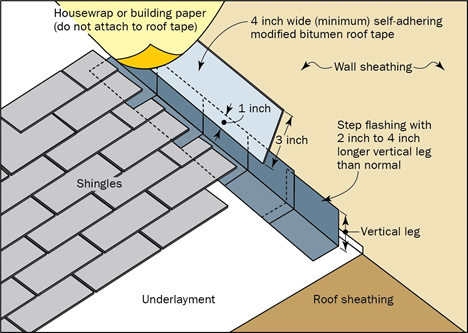Flashing is a thin layer of waterproof material, typically metal or vinyl, used to prevent moisture from entering the home’s interior and causing damage. Flashing is located at exterior windows, doors, and any other projections from the roof such as a chimney or skylight. High winds can damage roof flashing, which can put your home at greater risk of water intrusion and subsequent mold growth due to wind-driven rain. This can lead to leaks, corrosion, and dry rot reducing the building’s integrity and the health and safety of occupants.

To minimize damage, you can follow these preliminary steps to assess the condition of your building’s flashing:
Step 1: Check the building’s attic and ceiling for staining or discoloration. If present, this can be a sign of water intrusion.
Step 2: If possible, safely access the building’s roof and check all safely accessible projections (e.g., chimney, skylight) for gaps or damage to the flashing or sealant.
Note: Cracking, debris, or gaps between flashing and wall/roof surfaces allow moisture to enter the home and should be checked routinely.
If you notice staining and/or damage to roof flashing, seek professional help to either determine the cause of the leak or replace the faulty flashing. FEMA recommends using flashing that meets or exceeds local building code requirements in high-wind areas to effectively mitigate damage. Contact your local planning or building department for more information.


